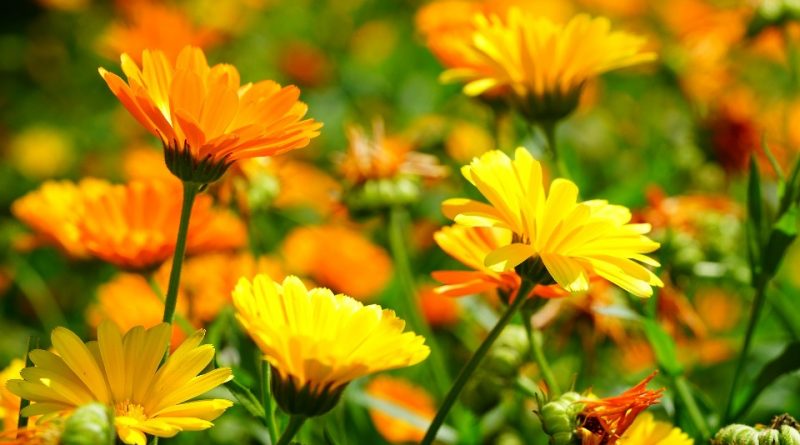Use of Calendula
Use of Calendula
Scientific name: Calendula spp.
Family: Asteraceae
Dialect name: calennula, catinedda, ciuriprimaticciu.
Annual or biennial herbaceous plant with prostate-erect habit, light green and tomentose due to the presence of scattered hairs, elongated oval leaves with finely toothed margin and covered with glands which, if rubbed, emit a characteristic scent. The flowers are gathered in yellow heads, rarely orange; both tubular and ligulate floral elements. The fruits are rough-pointed achenes.
The plant grows throughout the Mediterranean region and with all types of soil.
Active principles
They are found throughout the plant. The leaves are collected from March to November and must be taken; the flowers at the beginning of flowering, when they are not yet fully open.
Property
Anti-inflammatory, soothing, healing, choleretic, vulnerary,
painkillers and emmenagogues.
Internal use
In infusion against menstrual disorders, intestinal cramps and vomiting.
Menstrual pains: place 10 grams of flowers in 100 ml of water, leave to infuse for 10 ‘, filter and consume one cup a day.
Inflammation of the oral cavity: prepare the decoction with 40 g of fresh or dried flowers in 100 ml of water; filter and use for rinsing. The same decoction can be applied as a compress for irritated skin.
External use
Healing, anti-inflammatory, cleansing
Calendula oil: macerate 75 g. of fresh flowers in a jar of oil for 20 days, squeeze and filter; the oil thus obtained can be used as an emollient and calming agent for the skin.
Maria Canzoneri


